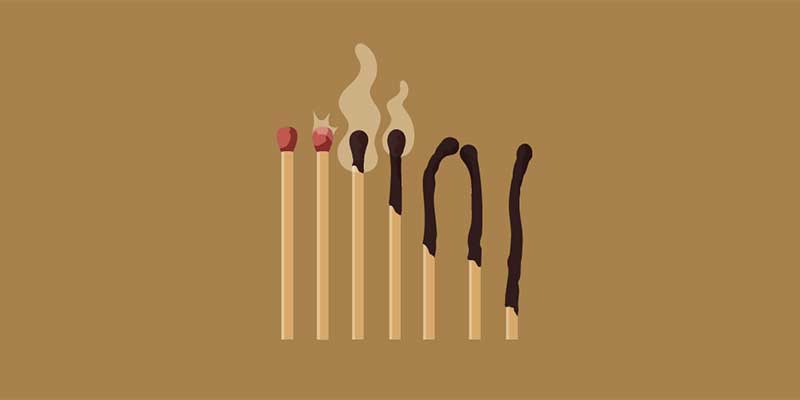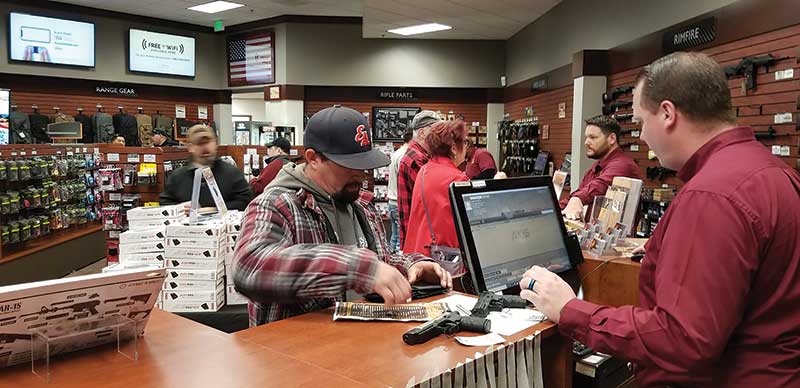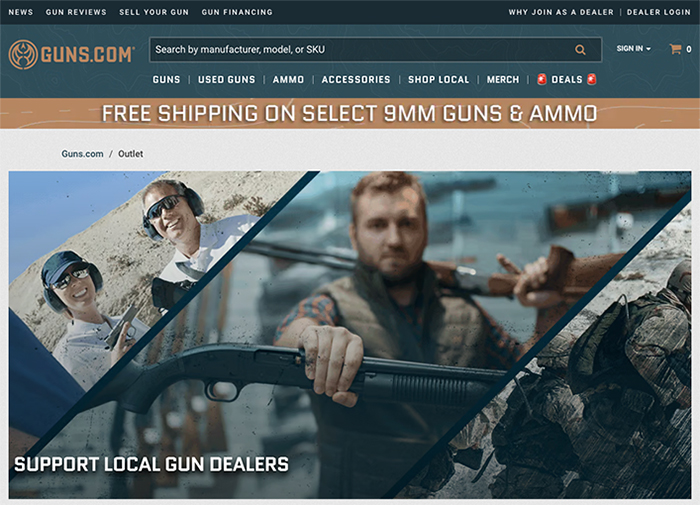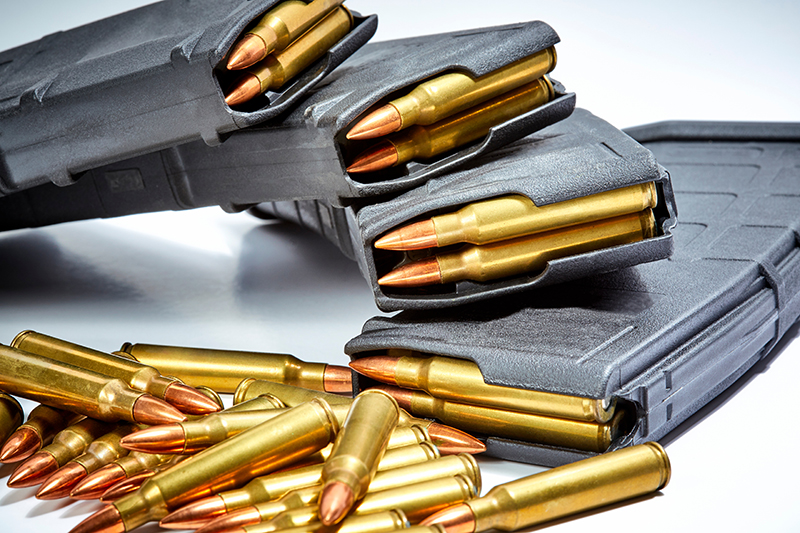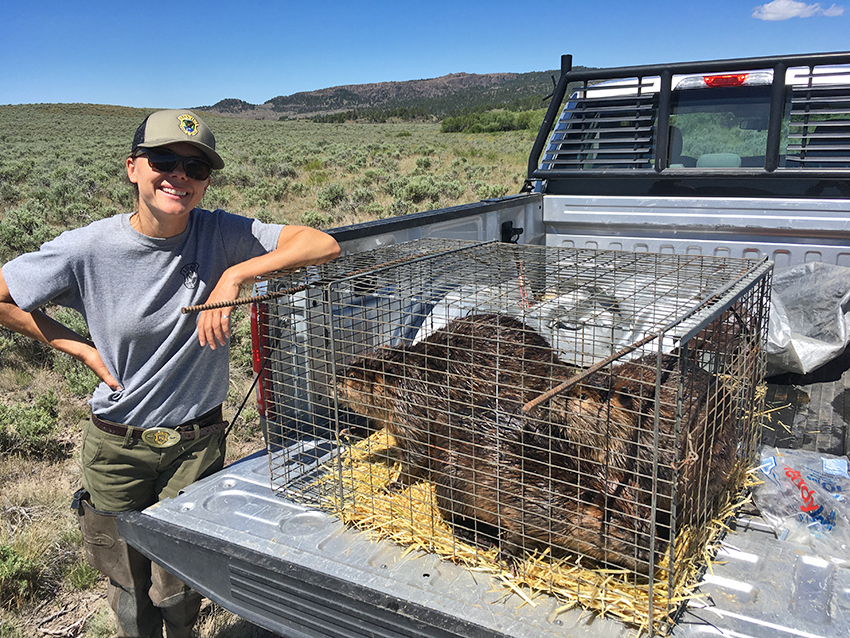7 Burning Questions
After 2021 delivered a second consecutive year of industry turmoil, it’s tempting to give up on the idea of forecasting. Yet even in times of uncertainty, there’s value in looking ahead to prepare for what’s likely to happen.
This is a cyclical business, and the current cycle will end at some point. There will again be a day when your ammo shelves are stocked and when you can fill the cases with whatever flavors of guns customers prefer. At the same time, we’ll have to deal with the ramifications of what’s happened over the past couple years and counting.
Consider in the first half of 2021, the industry served an estimated 3.2 million first-time gun buyers, according to the NSSF. As most readers of this article already know, the surge brought with it an increase in business from female and minority buyers.
To get a better idea of what shops are expecting for 2022, we talked with managers and owners of three stores spread across the nation. Our panel: John Havlick, owner of Frank’s Gun Shop in Gloversville, N.Y.; Mike Rust, general manager of H&H Shooting Sports in Oklahoma City; and John Phillips, president and founder of Poway Weapons & Gear near San Diego, Calif.
1. What are you expecting from the ammo segment? Will supplies return and will prices drop?
The best-case scenario, from our panel’s perspective, would be a normalizing of the ammo situation by midyear 2022.
“I think ammo will be completely stabilized by the summer. But so many factors play into it politically. There’s so much up in the air,” predicted Rust. “We’re all tired of telling people they can only buy one box.”
Still, Rust sees little hope for a reversal of the nearly half-dozen price hikes instituted by top manufacturers since the onset of turmoil, with raw material costs keeping prices elevated.
Phillips shares that outlook, expecting ammo to be tight until at least the summer. It’s a particular challenge for a shop that uses hundreds of thousands of rounds each month, through the range, classes and private instruction. And prices? Welcome to a new normal.
“I don’t know if we’ll ever see prices that low again,” Phillips said. “People will have to get used to a new normal somewhere between here and where prices were before.”
Havlick is even less optimistic, following conversations with manufacturers’ reps: “They’re all saying it’s going to be a year or year and a half before it catches up.”
Havlick’s also expecting a lasting impact — at least for the near-term — from this latest bout of panic buying. Even after supplies have returned, he anticipates customers continuing to stockpile at a slower pace, grabbing an extra box of ammo here and there.
“A lot of people got caught with their pants down,” Havlick added.
2. What about gun availability?
Each of our panelists expects to see gun supplies move closer to normal. By the end of 2021, most manufacturers were doing a solid job keeping up with demand for the most popular models and calibers. 2022 could see them pay more attention to less popular options, as they catch up on back-orders.
Havlick is looking forward to having more revolvers from Ruger and Smith & Wesson available at his shop, where there’s also pent-up demand for Kimber 1911s. But he’s also hoping to tackle a backlog of customer orders.
“I’ve probably got a list of 500 people looking for specific handguns or long guns,” he said. “We should be able to work through that list.”
The gun cases at H&H Shooting Sports are full of 9mm handguns. Rust would like to offer more variety, including revolvers and calibers like .45 ACP.
“Hunting rifles are also in short supply. They’re just trickling in,” he observed.
”The supply shortage, brings to mind the old Henry Ford quote: ‘Any customer can have a car painted any color that he wants, so long as it is black.’”
John Phillips, President & Founder Poway Weapons & Gear Poway, Calif.
It’s difficult to say when, exactly, the store’s buyers will be able to pick up the phone and order whatever they want. But he sees that day getting closer.
“If we don’t have another period of panic buying for some reason, they will certainly catch up,” he proposed. “You can almost compare it to wartime production. They’re pumping stuff out as fast as they can and as fast as they can get the raw materials.”
Phillips is also optimistic more options will be available as we move further into the year. Inventory levels may not make it quite back to “normal,” but, “I’m hoping we’ll at least get a little bit of everything,” he noted.
The supply shortage, Phillips said, brings to mind the old Henry Ford quote: “Any customer can have a car painted any color that he wants, so long as it is black.” Similarly, 2021’s customers could have any gun they wanted, as long it was one of the few models available.
It’s a situation that could have ramifications for those first-time gun buyers who often bought whatever they could get their hands on — rather than what they wanted. Many of them are eager for a do-over.
“There’s a lot of money on the sideline,” he said.
3. Record guns sales are often followed by an influx of used guns in the market. What are you expecting in the coming year?
This is a hard one to project, particularly given the potential for ongoing civil strife. It’s likely people who bought guns because they were afraid will hold onto them until they stop being afraid.
“I don’t think we’ll see those for another couple years,” said Havlick.
But if he does, he’s ready to be a buyer, with the store striving to keep a solid selection of used guns on hand. It’s important, though, to be fair with those customers, he cautioned.
“If you start lowballing everybody, the word gets out,” Havlick said.
Used guns are a larger part of the business at H&H, where they’ve been anticipating a surge in secondhand buying opportunities since the current panic cycle started.
“We said we’d be buying a large portion of those guns back in a year,” Rust confirmed. “It happened after Sandy Hook. I don’t see why it wouldn’t happen this time.”
While the wave of selling hasn’t happened yet, the store is making moves in preparation. They’ve been aggressive in letting people know the shop is a buyer. There’s a sign on the front of the building. They have radio ads. They run email promotions. And they recently bought billboard space. All with the message: “We buy used guns.”
“Once we put up those signs, wow. We started having people walk through the door with guns to sell,” Rust said.
4. What are you doing to retain these first-time buyers?
In a business marked with bouts of fear-induced buying, it’s not unusual to see a crowd of new faces in the shop. But this time brought a swarm of newbies unlike anything in history.
There’s hope this could be a boon for the industry, if it can figure out how to convert large numbers of them into regulars in the long term.
With every gun sale H&H includes a “shooter’s pass” good for three trips to the range. They’re offering more classes and recently hired a female instructor.
“The key is how we introduce them to firearms when they’re in the store,” Rust stated. “We need them to understand buying a gun is just the beginning, not the end of what they need for protection.”
It’s an equation good for both the customer and the store. No one likes the idea of a customer buying a gun without taking the time to learn how to use it safely. It’s one of the reasons Poway Weapons & Gear has marketing aimed at first-time buyers.
Getting those customers onto the range or into a class can provide an education, and also create brand loyalty to the shop. This leads to additional sales, more classes and memberships.
“The more times we get them into the facility, the more opportunities we have sell,” Phillips said.
Another key is showing newbies firearms can be a source of entertainment and socialization, said Havlick. His shop doesn’t have a range, but they hand out business cards from local gun clubs.
“If you can get them out shooting and meeting other people who enjoy shooting, the next thing you know they’re back here looking for another gun,” he said.
5. What 2021 dynamic has the potential to change the industry?
It’s well documented the gun-buying crowds of 2020 and 2021 included large numbers of women, minorities and people who previously might have been anti-gun. During the first half of 2021 alone, a large percentage of gun shops reported an increase in purchases by African Americans, Hispanic Americans and Asian Americans, according to an NSSF survey conducted earlier this year.
This matches what Rust has seen in Oklahoma City: “It’s almost like a segment of our society woke up to the idea safety is their own responsibility.”
It’s important to understand those customers may have different needs when compared to the traditional customer base. It’s the industry’s responsibility to meet those demands, Rust added.
H&H, for example, has seen an uptick in lower-income customers. In response, they’ve increased the inventory of less-expensive firearms.
“We’re not a store that’s going to say we don’t want that clientele or that segment of society. If they want a firearm, we want to be the store that provides it,” he said.
Phillips has seen a similar boost in ethnic — as well as political — diversity among its customer base. He sees it as an opportunity not just for new sales, but also for boosting support for the Second Amendment.
“It opens up a world of fresh opportunities for the industry,” Phillips said. “These are people who will go to the polls and vote. I’m excited about the opportunity to educate them.”

John Havlick, owner of Frank’s Gun Shop, predicts one trend with staying power potential
is the wake-up call customers received when ammunition shelves were bare. “A lot of people
got caught with their pants down,” he noted. Once supply levels improve, Havlick expects
customers to continue to stockpile — albeit at a slower pace.
6. How do you plan to reach customers in 2022?
Given the industry’s strained relationship with mainstream social media companies, it can be challenging to find effective ways to reach customers. When times are busy, it’s even tempting to sit back and let the customers find you. But eventually, things will settle down again.
“You’ve got to keep pounding your name out there,” said Havlick.
His shop focuses on print, radio and TV, which has proven to be a cost-effective tool: “You can literally spend $2,000 to $3,000 and get a decent campaign out of it.”
And while social media has its landmines, Havlick’s not ready to give it up. The key is figuring out how to do it without running afoul of the rules. For instance, mid-2021 he got into trouble on Facebook after posting photos of ammo boxes.
Instead, he now uses brand logos. Or he’ll post a shot of a puppy and say the “puppy ammo train” has arrived.
“You need to do things the algorithms won’t catch,” he said.
H&H has been moving away from print and focusing more on radio where it’s relatively easy to find an audience that matches customer demographics. They’ve also had success with a monthly four-page in-store flyer handed out with every sale.
“If you can get them out shooting and meeting other people who enjoy shooting, the next thing you know they’re back here looking for another gun.”
John Havlick, Owner Frank’s Gun Shop Gloversville, N.Y.
“We have customers who come in the first of each month to get that flyer,” Rust said. “We’ve had months where it’s generated 10% of our revenue.”
They’ve also launched a new initiative to develop informational videos for each FAQ on the store’s website. It’s designed to satisfy the communication preferences of younger customers.
“Any question people might call the store to ask about, we want to have a video to answer it,” he said.
Poway has largely abandoned traditional advertising, opting instead for a heavy social media presence and, more recently, data mining and analytics.
They’re looking to more precisely target customers who bought guns without taking a class, or who didn’t take a second class. Or customers who aren’t using the range. They can then build more narrowly focused marketing efforts targeting specific customers.
It’s the type of marketing commonly used in many other businesses, Phillips said.
“This industry is late to the party, but now we’ve got software to help us with this,” he confirmed.
7. Are you expecting the turmoil of 2020/2021 to spill over into 2022?
This one, of course, is anyone’s guess. No one could have predicted the past two years. And given recent history, it’s no surprise no one is ready to declare an end to the chaos.
“Every time you turn on the news, there’s something crazy going on. People just want to be able to protect themselves,” said Havlick, who’s still hoping things will ease up, at least a little. “It’s going to be a steady crazy, but not a pandemic crazy.”
Rust sees a political climate that appears to be calming down. “But we always say that with a Democratic president,” he reasoned. “We’re one press conference away from not having anything in the store.”
Phillips is more pessimistic, expecting the turmoil to stick around. And with it will remain the difficulties of running a business so easily affected by uncertainty.
“You kind of just have to put your numbers in and adjust as needed,” he said.
Dealers, have your say — what are your new year predictions? Send the SI team an email: comments@shootingindustry.com.

